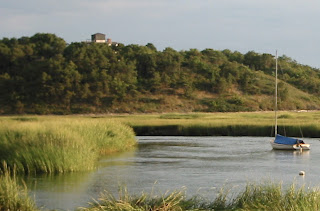Saturday, October 9, 2010
Wednesday, October 6, 2010
Studios
Monotypes
A monotype is created by covering a metal plate entirely with etching ink, then removing the ink partially or wholly for the lighter and white areas of the picture being made. This process is carried out using brushes, toothpicks, cotton swabs, foam rubber, fingers, etc. One can also start with a clean plate and apply the ink in various ways, but as etching ink is a fairly unmanageable substance it is hard to achieve the intended effect. If the ink is too thickly applied it will spread from the pressure when printed, forming a blot. If too thin it won't show up at all. When the picture on the plate is finished, it is run through an etching press with dampened rag paper to form a unique one of a kind print. Almost all the ink transfers fo the paper so it is not possible to make more than one print, hence the prefix mono.
The process of monoprinting and monotype printing is the same, but when doing monotypes the artist works on a clean and unetched plate; with monoprints, however, there is always a pattern or part of an image which is constantly repeated in each print.
Artists often use etched plates or some kind of pattern such as lace, leaves, fabric or even rubber gaskets, to add texture.
This is a difficult technique because not only is the image reversed when printed but while working on the plate it is hard to see what the final effect will be when the print is made. Many effects can be achieved in monotypes that are not possible with any other technique.
The process of monoprinting and monotype printing is the same, but when doing monotypes the artist works on a clean and unetched plate; with monoprints, however, there is always a pattern or part of an image which is constantly repeated in each print.
Artists often use etched plates or some kind of pattern such as lace, leaves, fabric or even rubber gaskets, to add texture.
This is a difficult technique because not only is the image reversed when printed but while working on the plate it is hard to see what the final effect will be when the print is made. Many effects can be achieved in monotypes that are not possible with any other technique.
Tuesday, October 5, 2010
Monday, October 4, 2010
Sunday, October 3, 2010
Papermaking 101
This weekend I attended a papermaking workshop at Castle Hill. I was not sure how much I would enjoy the art of papermaking. I have always admired other artist's work involving hand made paper. I recently purchased handmade paper for collage and have painted with Sumi ink on handmade paper.
The first morning of the workshop was a cool 55 degrees. The process involves putting your
hands in and out of cold water to strain the pulp into the mold. I imagined my hands leaving shriveled and cracked. The Saving Grace would be my instructor.
I had faith in Erin!
Erin Woodbrey is a talented artist and wonderful teacher. After a few hours I was amazed at the whole process of papermaking from its rich history to the awesome process of bark to pulp to paper.
We started out making simple sheets of paper from Kozo bark which comes from the bark of the paper mulberry tree. Adding to this process was when the fun began. I started to imbed items like lace, graphite dust and string by laying another sheet on top of the bottom layer. We used bleached Kozo as well. The pulp was bleached with Hydrogen Peroxide.
The second day I returned to see the dry paper. It was beautiful! I was sold! I loved papermaking. Thank you Castle Hill and thank you Erin for all your knowledge and enthusiasm.
Subscribe to:
Posts (Atom)













































